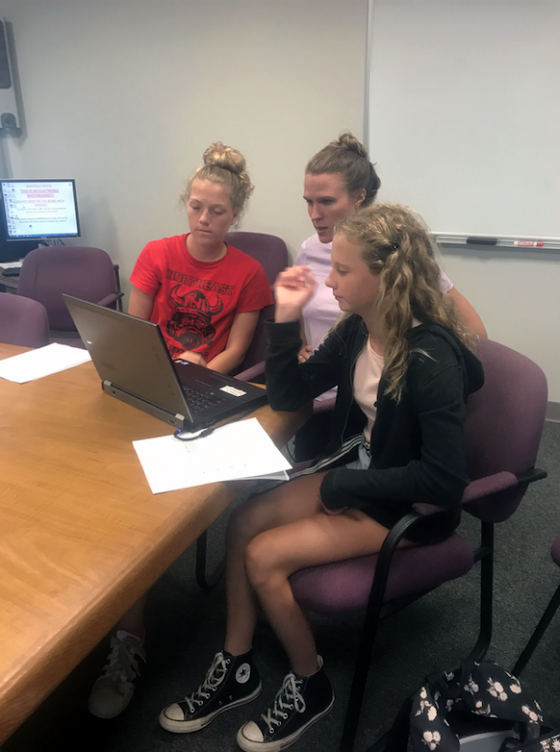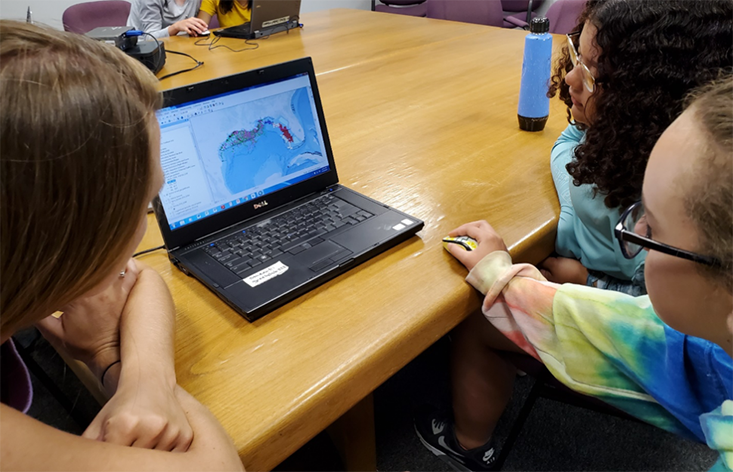Written by: Kyle Amergian
Week two of OCG, which is filled with various lab days, has come to an end! One of the seven labs that our campers could experience this past week was the Marine Protection lab, deigned to teach campers all about the tools of the trade used by fisheries scientists to conserve marine populations. First up was learning about marine protected areas! Science mentor Emily taught the girls all about the aquatic resources that we value and the different considerations that go in to the design of marine reserves. Did you know that the oldest marine protected area in the United States was established in 1975 to protect a civil war era shipwreck off the coast of North Carolina? Our awesome, tech-savy campers then got to design their OWN marine protected area using something called GIS (Geographic Information Systems)! Pictured are transparencies that campers Ani, Ashley, Lindsey, and Shiyenne created that come together piece by piece to make a complete blueprint of a city; this activity was designed to show campers how different layers in GIS can combine to help us see a complete picture and solve geographic problems. Campers had to decide what map layers they needed to use to position a protected area that accomplished a certain conservation goal and created some beautiful maps along the way to show off at final presentations! Pictured below are campers Ani and Ashley working with science mentor Becky to design a marine protected area that maximized essential red grouper habitat while avoiding disrupting any vessel shipping lanes. GIS is an important technological tool used by marine scientists for spatial planning, and now our campers have added it to their skillset!

Next up in the Marine Protection lab was fisheries management and modeling, led by Science Mentor Becky. In this half of the lab campers learned all about what impacts the size of fish populations and what tools managers use to determine how many fish we can responsibly catch while still conserving species (called the ‘maximum sustainable yield’)! Campers used the minted date of pennies to represent fish ages and calculate mortality rates via a catch-curve analysis, simulated a fishery with some Swedish fish to derive population growth equations, and built their very own Schaefer surplus production model from scratch in Excel to determine maximum sustainable yield and optimal harvest rate. How smart are these girls!? This lab gave the campers hands-on experience working with the tools and technology that real fisheries scientists use every day to protect our marine resources and conserve species and habitats for future generations.
The top three lessons that our OCG girls learned from the Marine Protection lab were:
- Humans utilize and value marine resources in many different ways (ex. seafood, recreation), and need to manage these resources responsibly so that they can be conserved in the future
- Marine protected areas are one tool used by scientists to protect important habitats for marine species, and can be classified in many different ways depending on their conservation goal
- Mathematic models such as stock assessments and production models can help us predict the size of fish populations in the future and determine how many fish we should catch to maintain a sustainable seafood industry
